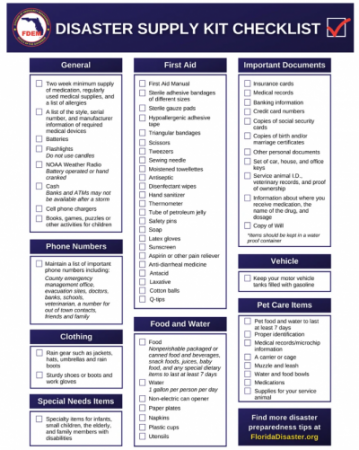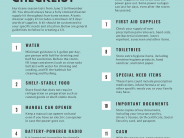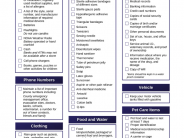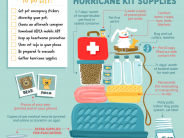Make a Kit
What to put in your at-home disaster kit:
- Non-perishable food for 3-7 days
- 3 (or more) gallons of water per person
- Manual can opener
- Flashlight & extra batteries
- External/portable charger
- Matches or lighter
- First Aid Kit
- Week’s supply of prescription medications
- Radio (battery operated or hand crank)
- Books & games
- Pet food, water, and medication
What to pack in your go-bag in case of an evacuation:
- Clothes
- Soap, toothbrush, & toothpaste
- Bedding
- Identification
- Cash
- Portable phone charger
- List of emergency contacts
- Medications, copy of medical records, & prescriptions
- Birth & marriage certificates
- Documents that prove where you live
- Insurance policies
For a more comprehensive and complete list of emergency kit supplies, click HERE.
Maintaining Your Kit
After assembling your kit, remember to maintain it so it’s ready when needed:
- Keep canned food in a cool, dry place.
- Store boxed food in tightly closed plastic or metal containers.
- Replace expired items as needed.
- Re-think your needs every year and update your kit as your family’s needs change.
Kit Storage Locations
Since you do not know where you will be when an emergency occurs, prepare supplies for home, work and cars.
- Home: Keep this kit in a designated place and have it ready in case you have to leave your home quickly. Make sure all family members know where the kit is kept.
- Work: Be prepared to shelter at work for at least 24 hours. Your work kit should include food, water and other necessities like medicines, as well as comfortable walking shoes, stored in a “grab and go” case.
- Car: In case you are stranded, keep a kit of emergency supplies in your car.




